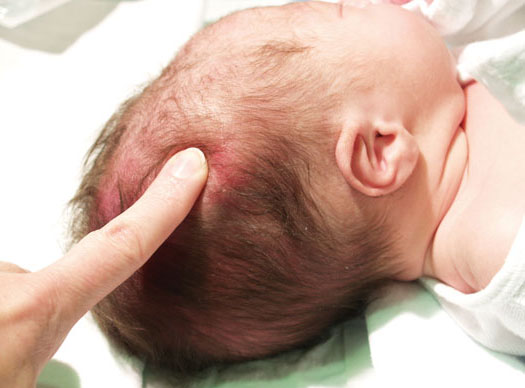Introduction
Welcoming a newborn into the world is a joyous occasion, but it’s also a critical time for medical professionals to assess the baby’s health. One common occurrence during childbirth is the development of caput succedaneum. In this article, we will delve into the clinical significance of caput succedaneum, its causes, effects, and potential management.
Table of Contents
- What is Caput Succedaneum?
- Causes of Caput Succedaneum
- Physical Characteristics
- Diagnosis and Clinical Presentation
- Immediate and Long-Term Effects
- Management and Treatment
- Preventive Measures
- Comparison with Other Birth Injuries
- Caput Succedaneum vs. Cephalohematoma
- Emotional Impact on Parents
- Medical Guidelines and Recommendations
- Caput Succedaneum in Assisted Deliveries
- Research and Advancements
- Parental Education and Awareness
- Conclusion
What is Caput Succedaneum?
Caput succedaneum is a condition characterized by the swelling of a newborn’s scalp that occurs during the process of vaginal delivery. It is primarily caused by pressure exerted on the baby’s head against the mother’s cervix and pelvic bones. This swelling generally appears as a soft, puffy mass on the baby’s head, typically around the area where the baby’s head first engages with the cervix.
Causes of Caput Succedaneum
The primary cause of caput succedaneum is the pressure exerted on the baby’s skull and scalp during passage through the birth canal. The baby’s skull bones are not yet fused, allowing them to slightly overlap during birth, aiding in the passage. The pressure disrupts the blood circulation and causes fluid to accumulate, leading to swelling.
Physical Characteristics
Caput succedaneum is identifiable by its characteristic appearance of swelling and softness. The area of swelling is often pitting when touched and might have a bluish or reddish tinge due to the accumulation of blood and fluid beneath the baby’s skin.
Diagnosis and Clinical Presentation
Doctors diagnose caput succedaneum through visual examination and palpation. The swelling is usually evident immediately after birth and may extend beyond the suture lines of the baby’s skull. Medical professionals assess the extent of the swelling and its impact on the newborn’s overall health.
Immediate and Long-Term Effects
While caput succedaneum generally resolves on its own within a few days to weeks, it can cause discomfort for the newborn and concern for parents. In some cases, the swelling might be associated with jaundice due to the breakdown of red blood cells.
Management and Treatment
In most cases, caput succedaneum does not require specific treatment. The swelling gradually recedes as the baby’s body reabsorbs the excess fluid. However, if the swelling is extensive or accompanied by other complications, medical intervention might be necessary.
Preventive Measures
Preventing caput succedaneum involves careful management of the baby’s position during labor, ensuring optimal positioning and minimizing the pressure on the baby’s head. Techniques such as gentle pressure and proper support can help reduce the risk.
Comparison with Other Birth Injuries
Caput succedaneum is distinct from other birth injuries like cephalohematoma or skull fractures. Cephalohematoma involves bleeding between the baby’s skull and the periosteum, while caput succedaneum involves swelling in the soft tissues of the scalp.
Caput Succedaneum vs. Cephalohematoma
While both caput succedaneum and cephalohematoma involve swelling of the baby’s head, the latter is confined to bleeding beneath the baby’s periosteum. Cephalohematoma takes longer to resolve and might carry a higher risk of complications.
Emotional Impact on Parents
Parents might feel distressed upon noticing their newborn’s swollen scalp. Medical professionals play a vital role in providing reassurance, explaining the condition, and discussing the expected course of recovery.
Medical Guidelines and Recommendations
Healthcare providers follow established guidelines for diagnosing and managing caput succedaneum. These guidelines help ensure consistent and effective care for newborns affected by this condition.
Caput Succedaneum in Assisted Deliveries
The risk of caput succedaneum might be slightly higher in assisted deliveries, such as vacuum or forceps deliveries. These techniques can exert additional pressure on the baby’s head.
Research and Advancements
Ongoing research aims to enhance our understanding of caput succedaneum, its underlying causes, and potential complications. This research contributes to improved diagnostic techniques and management strategies.
Parental Education and Awareness
Educating parents about caput succedaneum is crucial for dispelling concerns and providing essential information. By understanding the condition, parents can better advocate for their newborn’s well-being.
Conclusion
Caput succedaneum, though a common occurrence during childbirth, raises concerns for parents and healthcare providers alike. Understanding its causes, effects, and management is essential for ensuring the well-being of newborns. By providing accurate information and reassurance, medical professionals can guide parents through this experience with confidence.
FAQs
- Is caput succedaneum painful for the newborn? Caput succedaneum itself is not typically painful, but it might cause discomfort due to the swelling.
- Can caput succedaneum lead to long-term complications? In most cases, caput succedaneum resolves without causing long-term complications.
- Are there any specific treatments for caput succedaneum? Treatment is usually not required, as the swelling diminishes on its own. However, medical intervention might be necessary in severe cases.
- Does caput succedaneum increase the risk of neurological issues? Caput succedaneum is not generally associated with an increased risk of neurological problems.
- How can parents alleviate their concerns about caput succedaneum? By discussing the condition with healthcare providers and understanding its nature, parents can ease their concerns and focus on their newborn’s well-being.

